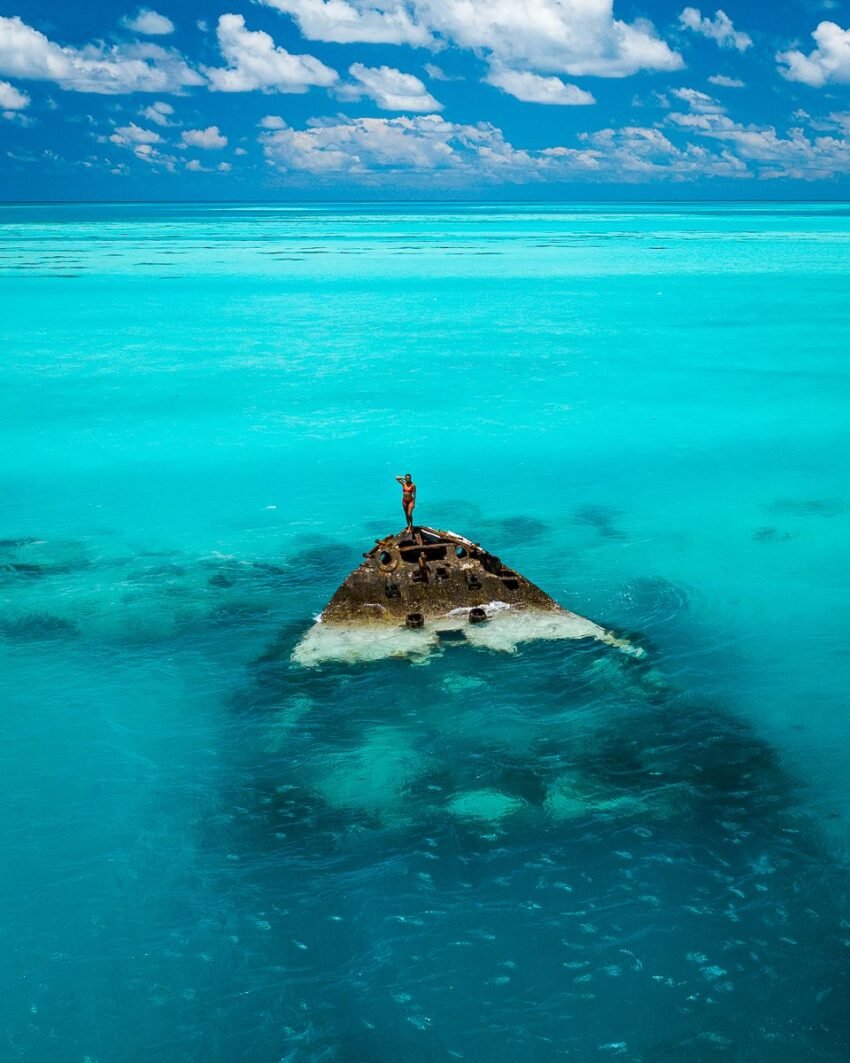Introduction: A Triangle of Mystery
Few places on Earth inspire as much intrigue and speculation as the Bermuda Triangle. This mysterious region, located in the North Atlantic Ocean between Miami, Bermuda, and Puerto Rico, has been the subject of countless legends, theories, and investigations. Ships vanish without a trace, planes disappear from the skies, and strange reports of compass malfunctions have fueled its reputation as the “Devil’s Triangle.” But what is the truth? Is it a supernatural hotspot, a scientific phenomenon, or simply a collection of exaggerated tales?
The Origins of the Bermuda Triangle Legend
The legend of the Bermuda Triangle began gaining attention in the mid-20th century. In 1950, journalist Edward Van Winkle Jones wrote about strange disappearances in the area. Two years later, writer George X. Sand expanded the story in Fate magazine, suggesting mysterious forces were at work. By 1964, author Vincent Gaddis coined the term “Bermuda Triangle” in a magazine article, cementing its place in popular culture. From there, books, documentaries, and films amplified the mystery, making the Triangle one of the world’s greatest enigmas.
The Most Famous Disappearances
Several high-profile disappearances are at the heart of the Bermuda Triangle myth:
- Flight 19 (1945): A squadron of five U.S. Navy bombers vanished during a training mission. Rescue planes sent to find them also disappeared. No wreckage was ever recovered.
- USS Cyclops (1918): This U.S. Navy ship, carrying over 300 men and 10,000 tons of manganese, vanished without sending a distress call.
- Star Tiger and Star Ariel (1948–49): Two passenger planes disappeared while flying over the Triangle, baffling investigators.
- The Witchcraft (1967): A cabin cruiser reported engine trouble near Miami but was never seen again.
These stories fueled the belief that something beyond explanation was happening in the Triangle.
Myths and Theories of the Bermuda Triangle
Over the decades, countless theories have tried to explain the mystery. Some lean toward the paranormal, while others focus on natural science:
- Alien Abductions: A popular idea is that UFOs use the Triangle as a gateway, abducting ships and planes.
- Atlantis Connection: Some believe the lost city of Atlantis lies beneath the Triangle, powered by mysterious crystal energy.
- Time Warps: Stories claim the Triangle holds a portal to another dimension or time period.
- Human Error: Skeptics argue many accidents were caused by navigational mistakes or poor weather.
- Compass Variations: The area is one of the few places where compasses point to true north instead of magnetic north, confusing navigation.
- Methane Gas Theory: Scientists suggest underwater methane eruptions could reduce water density, causing ships to sink suddenly.
Natural Explanations: Science Behind the Mystery
Despite wild theories, many researchers argue the Bermuda Triangle is no more dangerous than other heavily traveled areas. Natural explanations include:
- Violent Weather: The Caribbean and Atlantic are prone to sudden hurricanes, tropical storms, and rogue waves.
- Shallow and Deep Waters: The ocean floor changes drastically in this region, making navigation risky.
- Gulf Stream Currents: Strong ocean currents can quickly carry away wreckage, explaining why little debris is ever found.
- Human Error: Many accidents were later attributed to inexperienced pilots or navigators misjudging their position.
In fact, insurance companies and the U.S. Coast Guard do not consider the Bermuda Triangle unusually dangerous compared to other parts of the world.
Flight 19: The Case That Defined the Mystery
Perhaps no story captures the imagination like Flight 19. On December 5, 1945, five TBM Avenger torpedo bombers vanished during a training flight. The pilots reported compass malfunctions and disorientation. A rescue plane sent to find them also disappeared. The official Navy report blamed “causes or reasons unknown.” Over time, the story grew into the ultimate Bermuda Triangle legend. Later research suggested the pilots became lost and ran out of fuel, but the mystery endures.
Pop Culture and the Bermuda Triangle
The Bermuda Triangle’s reputation exploded through pop culture. In the 1970s, books like Charles Berlitz’s The Bermuda Triangle claimed supernatural forces were at work. Hollywood films such as Close Encounters of the Third Kind hinted at alien connections. TV shows, documentaries, and even cartoons portrayed the Triangle as a dangerous, unexplainable zone. This media coverage turned it from a maritime curiosity into a global legend.
Skepticism and Debunking the Mystery
Skeptics argue that the Bermuda Triangle is more myth than reality. The U.S. Navy and U.S. Coast Guard both reject the idea of anything unusual in the area. In fact, statistical studies show the number of accidents in the Bermuda Triangle is not significantly higher than in other parts of the ocean. Many so-called “mysteries” were later explained as storms, equipment failure, or reporting errors. Some stories, like ships disappearing on calm seas, were exaggerated or fabricated entirely.
Why We’re Fascinated by the Triangle
If science can explain most of the Triangle’s mysteries, why do we remain so fascinated? The answer lies in human psychology. We are drawn to the unknown and to places where science has yet to provide complete certainty. The vastness of the ocean, the fear of the deep, and the thrill of unsolved mysteries fuel our imagination. The Bermuda Triangle is a perfect storm of mystery, fear, and wonder that continues to capture the world’s attention.
The Bermuda Triangle Today
Today, the Bermuda Triangle remains a heavily traveled area. Thousands of ships and planes pass through it safely each year. Cruise ships sail its waters daily, and airlines operate regular flights across its skies. For scientists, it’s a reminder of how myths can grow from unexplained events. For dreamers, it remains a gateway to possibility—whether of aliens, lost civilizations, or portals to other worlds.
Conclusion: Mystery Meets Reality
The Bermuda Triangle is a blend of truth, myth, and mystery. While science explains much of what happens in this region, legends of vanished ships and planes remain part of our collective imagination. Whether seen as a dangerous “Devil’s Triangle” or simply another busy ocean passage, the area symbolizes humanity’s fascination with the unknown. Perhaps the real power of the Bermuda Triangle is not in what it hides, but in the stories it inspires—reminding us that even in the age of satellites and science, mystery still exists.


